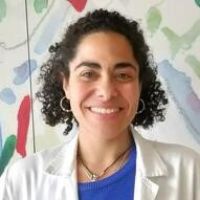Advances in Hydrogels for Tissue Engineering
A special issue of Gels (ISSN 2310-2861). This special issue belongs to the section "Gel Applications".
Deadline for manuscript submissions: 31 July 2024 | Viewed by 5286
Special Issue Editors
2. Instituto de Investigación Biosanitaria ibs. Granada, 18012 Granada, Spain
Interests: tissue engineering; biomedicine; histology; hydrogels; pathological models; biomaterials; peripheral nerve regeneration; cancer models
2. Instituto de Investigación Biosanitaria ibs. Granada, 18012 Granada, Spain
Interests: tissue engineering; biomedicine; histology; hydrogels; decellularization; biomaterials; peripheral nerve regeneration; 3D printing; intraluminal fillers
Interests: molecular biology; schwann cell culture; human iPSC; tissue engineering; nerve morphometric analysis; decellularization; biomaterials; intraluminal fillers; peripheral nerve regeneration
Interests: biomedical instrumentation; tissue engineering; electrical & electronics engineering; material characterization; cell culture; data analysis; cancer; nanofabrication; cancer diagnostics; instrumentation
Special Issue Information
Dear Colleagues,
Tissue engineering and so-called advanced therapy medicinal products offer groundbreaking new opportunities for the treatment and understanding of disease and injuries. Over the last few decades, there have been tremendous advances in the generation of new tissue models that are increasingly biomimetic and functional. Manufacturing techniques usually combine biomimetic materials, patterning methods, bioactive chemical molecules, and cells to generate new therapeutic substitutes or disease models.
In this context, hydrogels have been postulated as one of the biomaterials that are most faithfully capable of simulating the native extracellular matrix of tissues. The high hydration rate of these polymeric scaffolds provides the ideal supramolecular microenvironment for cell survival, proliferation, communication, and differentiation. This is why different techniques have been focused on the improvement and customization of the mechanical and biological properties of these scaffolds. This fact opens new horizons for the possibility of generating functional hydrogels with tunable structures and properties.
Due to the hydration and diffusion control of the 3D structure of hydrogels, they have also been used as drug delivery systems, loading the supportive matrix with different types of nanoparticles, responsive molecules, and a large number of functional elements.
This Special Issue aims to collect original comprehensive reviews and research articles focused on hydrogel manufacturing for tissue engineering applications, which will be of interest to the entire scientific community.
We invite you to share your results in this field through this Special Issue.
Dr. Jesús Chato-Astrain
Dr. Óscar-Darío García-García
Dr. Marwa El Soury
Dr. Mohsen Janmaleki
Guest Editors
Manuscript Submission Information
Manuscripts should be submitted online at www.mdpi.com by registering and logging in to this website. Once you are registered, click here to go to the submission form. Manuscripts can be submitted until the deadline. All submissions that pass pre-check are peer-reviewed. Accepted papers will be published continuously in the journal (as soon as accepted) and will be listed together on the special issue website. Research articles, review articles as well as short communications are invited. For planned papers, a title and short abstract (about 100 words) can be sent to the Editorial Office for announcement on this website.
Submitted manuscripts should not have been published previously, nor be under consideration for publication elsewhere (except conference proceedings papers). All manuscripts are thoroughly refereed through a single-blind peer-review process. A guide for authors and other relevant information for submission of manuscripts is available on the Instructions for Authors page. Gels is an international peer-reviewed open access monthly journal published by MDPI.
Please visit the Instructions for Authors page before submitting a manuscript. The Article Processing Charge (APC) for publication in this open access journal is 2600 CHF (Swiss Francs). Submitted papers should be well formatted and use good English. Authors may use MDPI's English editing service prior to publication or during author revisions.
Keywords
- tissue engineering
- hydrogels
- regenerative medicine
- polymers
- 3D bioprinting
- therapeutic hydrogels
- self-assembly
- stimuli-responsive hydrogels









